Easter in Sicily with the New Fuji’s
By Colin Steel
(From Steve: Enjoy this superb article and photography from Colin Steel. Colin once again proves it is not about the gear at all..but about skill and vision. Thanks Colin! BTW, if anyone out there wants me to feature their own article or guest post or user report, send me an e-mail HERE. Thanks!)
Hey folks, I am just freshly returned from my two-week trip to Sicily where I photographed the Easter festivals and celebrations. For the Sicilians this as an extremely important and often very emotional event for them and it culminated in following and shooting the highly charged 24 hour procession of twenty-four alters through the regional town of Trapani. Just to add a little fun for me I managed to purchase the new Fujis (X20 and X100s A really useful review by Steve Huff) specially for the trip and I will share my thoughts on them for this type of event based documentary photography. As anyone who has read my posts before will know, what I wont do is dwell on the image quality and technical aspects of the cameras as I find that most cameras nowadays can produce acceptable technical quality results and, given that all of the shots had some post processing in SilverEffexPro, the differences become largely redundant for my purposes. What ‘image quality’ means to me is how effectively can I create interesting photographs with these tools ? Not what do the files look like at 100% enlargement of stamps, bottles or walls. For that reason I wont even say which shots were taken with which camera (mainly because I can’t remember and can’t be bothered re-checking each one 🙂
Before I go into some background on the shooting and make some observations about the cameras, I think it would be good to mention something important that emerged in my approach to some of the photographs. Never having been to Sicily before or having previously attended an event of this nature, I was taken by the iconic imagery of the paintings and statues within the churches and halls that I was shooting in and I tried my best to imitate that look whenever it was appropriate. I did that by watching for the right light and compositions where I could remove background distractions and create a ‘painterly’ appearance to the photographs. I also used the Tri-X film simulation in silverefexpro2 to add to the feel of the images (more on the editing and PP later)
Background
I have been very lucky to meet many fantastic people on my travels and a few of them have become very good friends despite being from extremely diverse locations such as Costa Rica, Chicago and Geneva. As we share a joint passion for photography and travel we decided to try to meet up this year at a location that none of us have visited before. Also, having previously enjoyed attending workshops hosted by knowledgeable photographers whose work we admired, we decided to combine both and attend an Ernesto Bazan workshop in his home country of Sicily. This turned out to be an inspired decision and I will talk about the workshop experience later as I am beginning to think that, when wisely chosen, these are the best single photography learning and educational investments you can make to improve your skills and style.
The context for Ernesto’s Sicily workshop was to locate everyone in a gorgeous traditional villa by the seaside and near to the town of Marsala as a base and then make the short trips to shoot the various processions and festivities that took place over the Easter week. I think its fair to say that Ernesto’s approach is to encourage the search for emotional and poetic inspiration and as we all know, that is not so easy at the best of times and even more difficult when you are shooting in throngs of people with myriad distractions and ‘shot-killing’ elements. To this end he set a very high standard for everyone and immersed himself with us in trying to interpret the events as we individually and uniquely saw them.
As I said earlier, my own main focus was to try to use the light as best I could to create the iconic, painting look that I had observed in the many churches we visited. Additionally, it appeared to me that there was somewhat of a ‘dark’ and mysterious side to Sicily that I also wanted to try to incorporate without becoming cliched. Given this approach that emerged as to my interpretation of sicily and these festivals, how did the equipment I used help or hinder in achieving the results that I was looking for?
The Cameras (X20 & X100s)
Firstly, as readers of previous articles will know, I have been shooting in a square 1:1 crop and in Black and White for some time now. I am at a loss to explain the square crop other than that I like the tightness and symmetry of the results I get. Although it could be argued that it is more suited to portraits and still life, for me (and many more superior photographers than me like Vivian Maier, Diane Arbus and any of the TLR users) it is not difficult to adapt to documentary style photography although you do lose the undoubted advantage of the 3:2 narrative style. Anyway, I have settled on this format in the meantime and now find it extremely difficult to frame outside of that and this is one of the major benefits of these cameras and in particular the delightful X100s, let me try to explain. The X100s has a marvelous optical viewfinder that frames like a rangefinder and when 1:1 crop is selected the frame lines adapt to a centered square with lots of space around the lines so that you can tighten your composition just like in a Leica or other rangefinder. I appreciate that the vast majority of people shoot 3:2 and the frame-lines are nearly as good in that format and are reasonably accurate. Additionally, the X100s now has an extraordinarily good manual focusing system that is deadly accurate. At first when I read about this feature I thought it was a bit gimmicky but believe me, this is the real deal. If, like me, you like to shoot with a lot of depth of field whenever possible, this manual focusing system is fantastic and lends itself very well to zone focusing at set distances. If you have ever used a split screen to focus (as in old film slr’s) this is based on a similar principle with the added benefit of enlargement to aid and also a ‘focus peaking’ type shimmer on the focused area. I used this a lot and found the best way was to aim and press the AF button which is very conveniently located and then fine tune if needed via the light focusing ring on the lens. For my purposes I find this much simpler, easier and quicker than trying to change AF points and I found that I could get very nice tight results even in very low light.
Having praised the manual focus which I used a lot, the auto focus on the X100s is also vastly improved as well although, despite Fuji’s claims and what I have read, I personally did not find it to be as fast as the Olympus OMD or Nikon V1, but it is more than adequate. On that subject, I still don’t find this camera to be a speed merchant in any area however, I did find that for the type of shooting I do it worked an absolute treat and I was extremely happy with it’s all round performance. I wont bore everyone by re-iterating the key selling points of the Fuji X range but suffice to say that this is one extremely well made camera with exactly the type of manual controls that photographers who concern themselves with the final image rather than playing about with endless mode settings and menu trickiness will value. The ability to have a clear optical viewfinder with superb frame-lines, just the right minimal amount of shooting information required to make a shot and the ability to use the nicely weighted exposure compensation dial with your thumb when you know the meter is going to make a mistake, is all that I can ask from a camera so well done Fuji, this is a classic. Of all of the camera manufacturers these are the guys that are really homing in on what real photographers want and need.
Just to round out on the X100s, like its older variant the X100 the lens is fast and sharp and the silky aperture ring around the lens is a joy to use. For what its worth my preferred set up for the camera is to use the square format, aperture priority, optical viewfinder, B&W film mode with yellow filter and manual focus. As I mentioned earlier, this gives me complete manual control of all of the critical photo making aspects of the camera as a creative tool and it all becomes extremely intuitive and very fast to use. The only other point worth mentioning is that I shoot RAW plus Fine JPG and this gives me the margin for error with the crop in the 3:2 RAW file if I need it (which isn’t often thankfully) I hope you begin to get a sense of how much I enjoyed this camera and the pleasure I got from its ability to get out-of-the-way when I was looking for interesting light, form and content to shoot.
The Fuji X20 is a very different but complimentary camera to the X100 (and nearly any other camera I can think of) for a few very key reasons. Like my much-loved X10 before it, it is stunningly well made and is essentially manual in control of the key creative photographic functions. As you will all probably be aware, Fuji have updated the sensor and processing engine and critically added shooting and focus information to the optical viewfinder. This transforms the camera into a superb, compact shooting tool and I found it even faster than the X100s in practical shooting use as it seemed to me to focus more quickly. Although I very much liked the viewfinder improvements I still found myself shooting more with the rear screen on this camera to compose and this allowed me to shoot from higher or lower angles when I needed to.
When the action was getting faster at the end of the parades, I found myself using the two cameras in tandem by using the X20 when I had to do something fast and reactively and the X100s when I had more room and time to compose. I also sometimes used the X20 at 50mm equivalent on the odd occasion when I couldn’t get as close as I needed for the X100s’ 35mm equivalent. Did I need two cameras to do this? Of course not but I did find that the similarity in controls, function and results meshed very nicely to the extent that I can unreservedly recommend these as a delightful and highly usable pairing for anyone in a similar shooting situation.
I don’t want to go over all of the aspects of this camera that I liked again as they are identical to the ones I mentioned in the previous X10 article but the manual switch on and zoom which I can now guide to 35mm or 50mm by touch is exceptional and the exposure compensation dial which is similarly placed and functional to the X100s completes the control package. Because of the family similarity of controls and menus these cameras make using them together a very simple and attractive proposition. On that compatibility advantage, because I was unsure of how the lighting conditions would play out, I took along the wonderful Fuji EF-X20 flash unit which is a beautifully built but tiny marvel that works equally well on either camera. I did use it very sparingly but once or twice it got me shots that would have been impossible to light otherwise.
I know this will get me in deep trouble with the strobist community but I am personally very fond of the flat, shadowy, frontal look of camera mounted flash and that is exactly where I used this little marvel as it added so little size or weight to the camera. I kind of like the almost grotesque, paparazzi look that can be achieved with it. If anyone is interested in how this style can work as show by a master creative photographer, have a look at Jacob Aue Sobol’s work with the Leica MM where for almost every shot he took he used on camera flash. I had the very good fortune to meet Jacob in Singapore and he explained to me that he had a very unique, high contrast processing style for film which up until that point he had used exclusively and to get similar contrasty results with digital he had to use the on camera flash.
I think by now you can all tell how pleased I was with the Fuji cameras and the ultimate functionality and simplicity of using them to make photographs. To finish off on the X20 my preferred set up is again RAW plus fine JPG in square crop (the square crop does not show in the X20 viewfinder but it’s not difficult to judge) B&W film mode with yellow filter and aperture priority.
Post Processing
Every shot shown here was processed in a similar fashion and here it is: Although I set up for fine JPG in B&W I tend to use that more for review to make sure I am getting the look I want and the actual PP images are taken from the RAW files. The process I used is ultra simple as I hate spending time on the computer. As the RAW files are presented in square in Lightroom, unless I need to change the crop slightly (and that is unusual thankfully) they go straight into silverefexpro2 where I normally apply the Tri-X film look filter and occasionally selectively darken or lighten a distracting area with the simple to use control points. I generally then add a little vignette using the lightest option unless something a bit more severe is required for the mood and that’s it. If it takes more than a few minutes something is very wrong and I usually give up on the shot at that point. Despite never having shot film, I have become a huge fan of the Tri-X 400 look and the contrast and grain is gorgeous. In one or two of the low light shots here this has become pronounced and I love it as it creates exactly the look and mood that I am after. It never fails to astonish me how simple the modern processing tools have made it to achieve this look and this is the reason why I think conversations about the sensor quality and output in modern cameras are pretty irrelevant. To my mind the files output by both of these cameras are very robust and they seem to adapt to the Tri-X look beautifully. I would imagine that if you are a fine art or salon type photographer the X100s could be a dream for you with its sexy smooth looking images.
Photography Workshops
This has been the longest post I have written in a very long time as I completely lost enthusiasm and felt that I had run dry on photography as a subject. I feel the need to change topic here or I will talk to much about equipment rather than the creative photographic art and that is exactly why I lost enthusiasm in the first place !! 🙂 A couple of events changed my life in many ways last year and they were both photography workshops with people who I consider to be at the absolute top of the game for the type of photography I like and it has now happened again this year and I consider it critical to share this with anyone who is reading this that has the drive and passion to try to improve their photography to both better understand humanity and express their uniqueness in their own style. As regular readers will know, I love travel and out of that developed a love of photography however I began to feel that the type of travel photography I was doing (even though it was commercially successful) was very unsatisfying and clearly not expressing any of my personality or thoughts on the world. I still wanted to travel to unique places but also wanted to learn from photographers who to me were credible and whose work I admired. With this in mind I travelled to Sicily, where these photographs were taken, to a workshop with Ernesto Bazan having researched his work and found myself admiring his work on Cuba very much. This turned out to be a completely inspired decision and the environment that Ernesto created and his out-and-out humanity, openness and passion made this a truly life enriching experience. I know some of you may think I am getting carried away here but it’s very true and I think any of the 10 other students would say the same. I am beginning to form an opinion that if you are open to it these type of workshops somehow give you better insight into yourself both from a human and personality perspective and from this comes moments of insight into the gorgeous diversity of this world and the endless visual richness that light reveals to us. Personally, I feel that it is this combination of personal insight and increased sensitivity to visual possibility that transcends technical competence and conventional structure to allow you to be more creative and to express yourself in your own way, this is what Ernesto enabled for me.
In conclusion then, if you are thinking of a photography workshop I would advise going through the following simple thought process before you make your choice; firstly, select a location or event that interests you a lot, this is more important than you may think, secondly, look at which photographers run workshops there (I will add links of my favorites at the end), thirdly extensively research their work, it is vitally important that you admire their work greatly. I think if you follow these simple steps you will find the workshop to be the single best investment that you can make to improve your photography. Forget about new equipment, on-line training and college classes as a properly chosen, minimum 7 day workshop with a real creative artist will reward you with greater satisfaction and development than all of these put together.
If anyone is interested, I have a simple way of funding my passion to learn and develop (and to buy the equipment that I am addicted to….) and that is that I simply stick $50 every time I think on it in my Starbuck mugs that I have collected from the cities I have visited. I am continually amazed at how this accumulates and finances my photography 🙂
I am sorry if this has been a bit too much of a ramble for any of you but there was a lot in my head that I wanted to get out and writing doesn’t come easily to me so apologies for any grammar, spelling and structural errors 🙂 I do hope that you have found at least something of interest in here and even more hopefully, something that helps you to enjoy photography more.
the links:
Best Wishes,
Colin

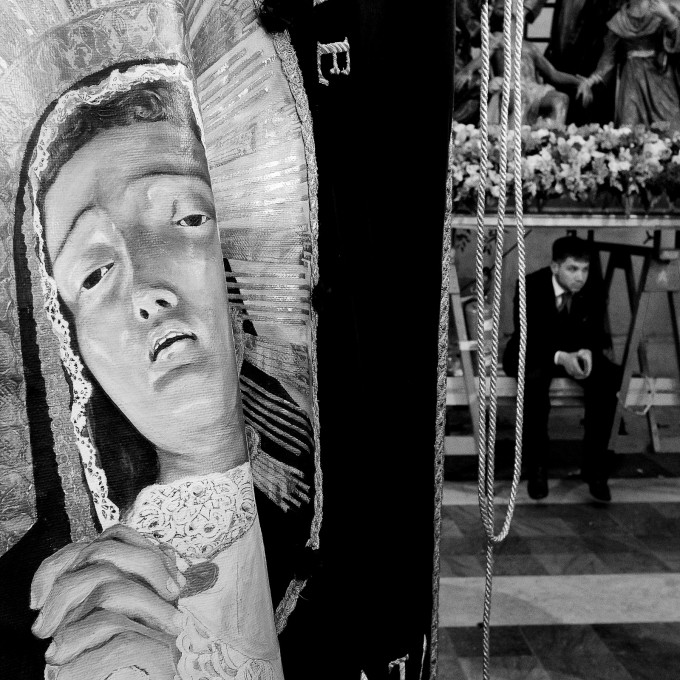
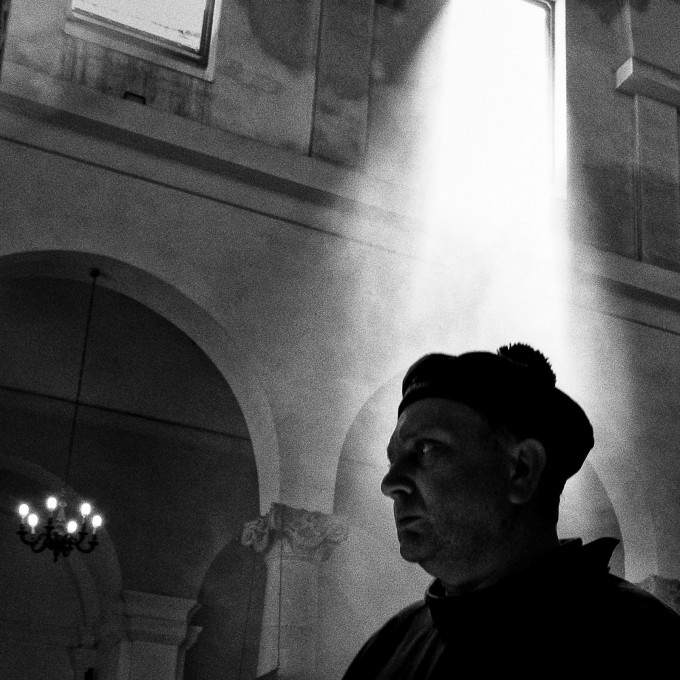
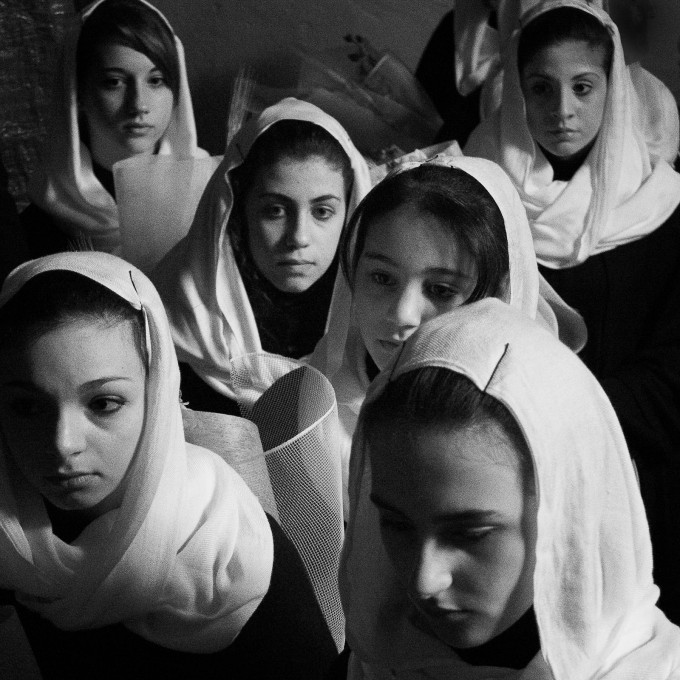
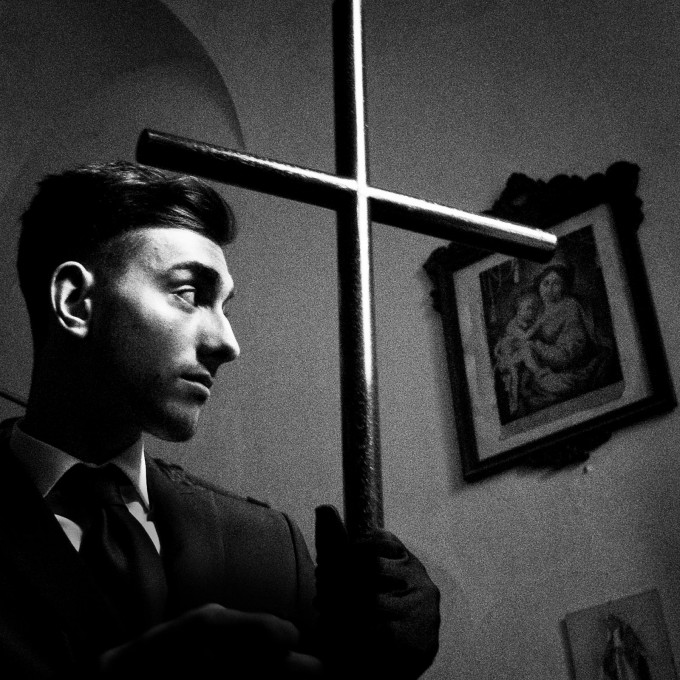
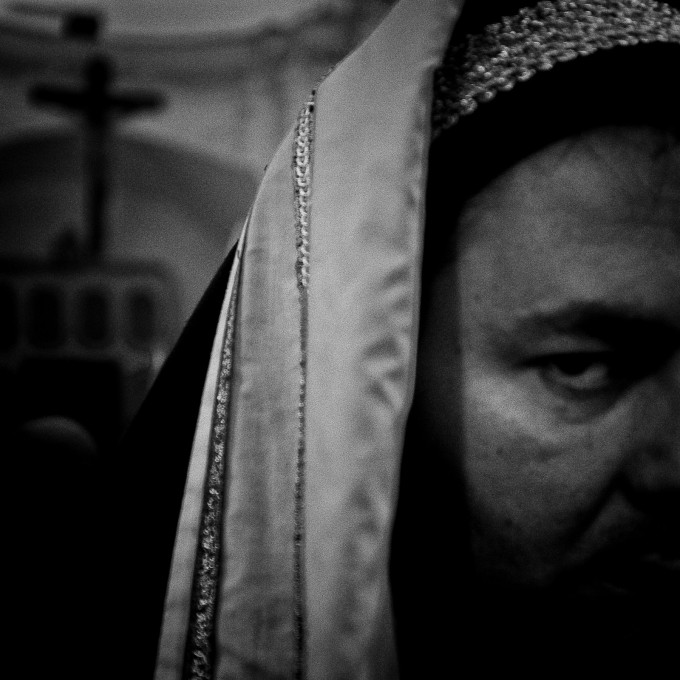
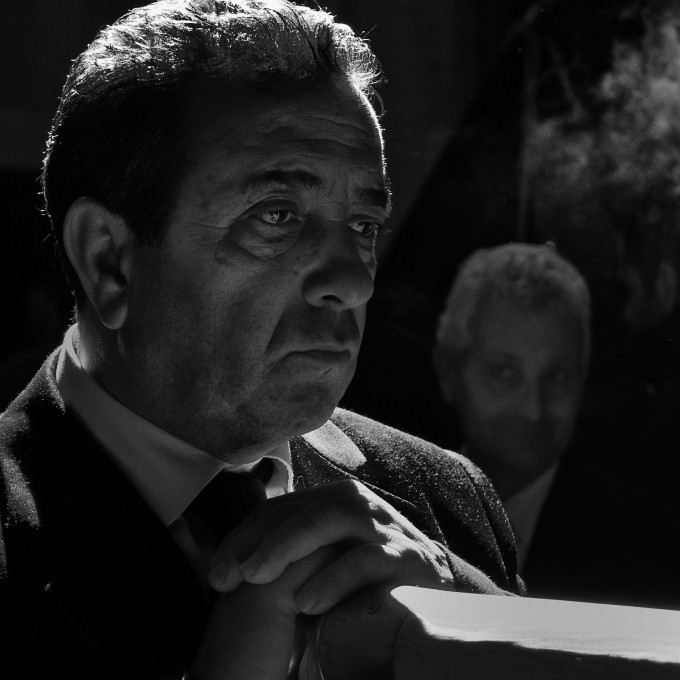
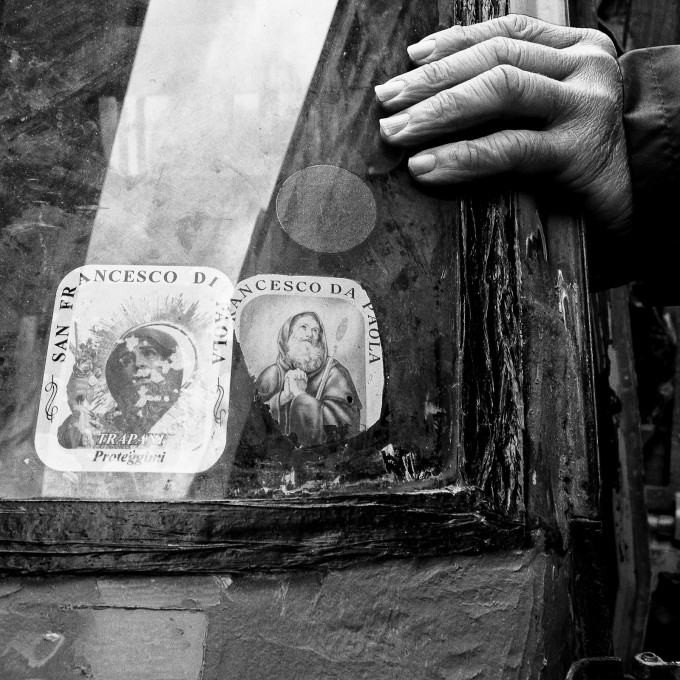
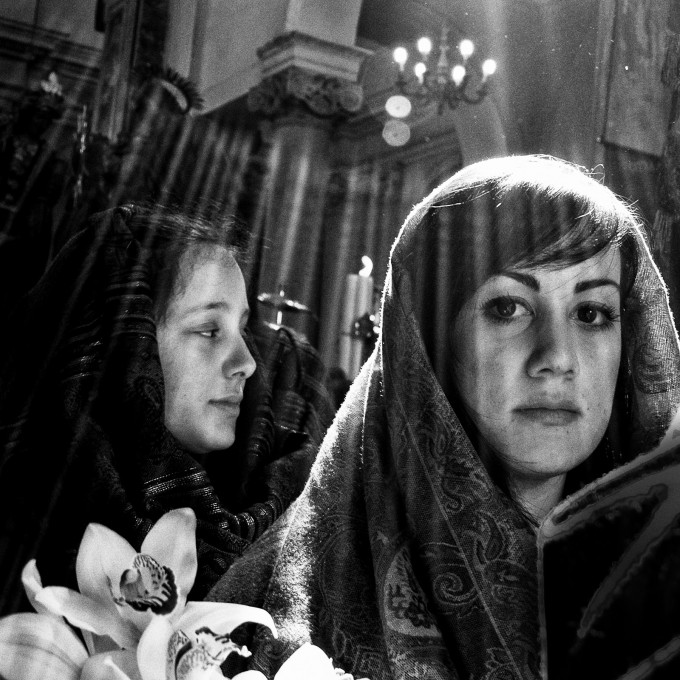
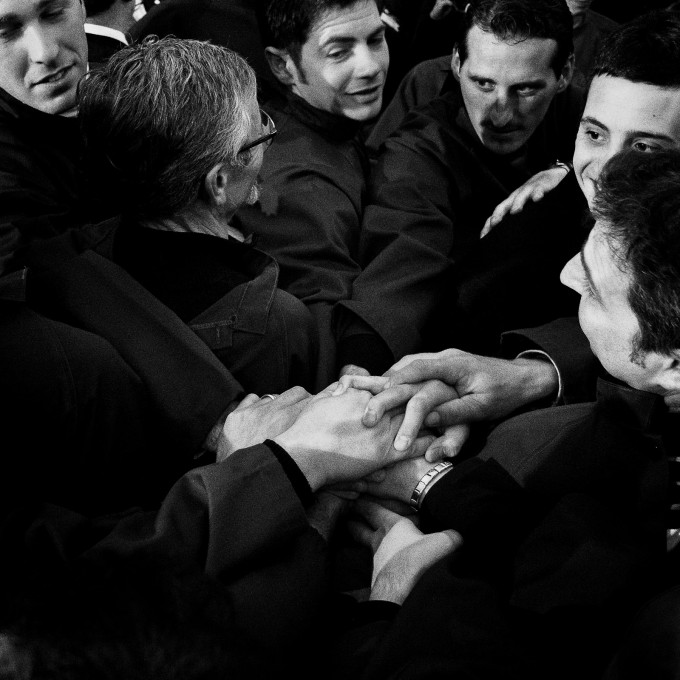
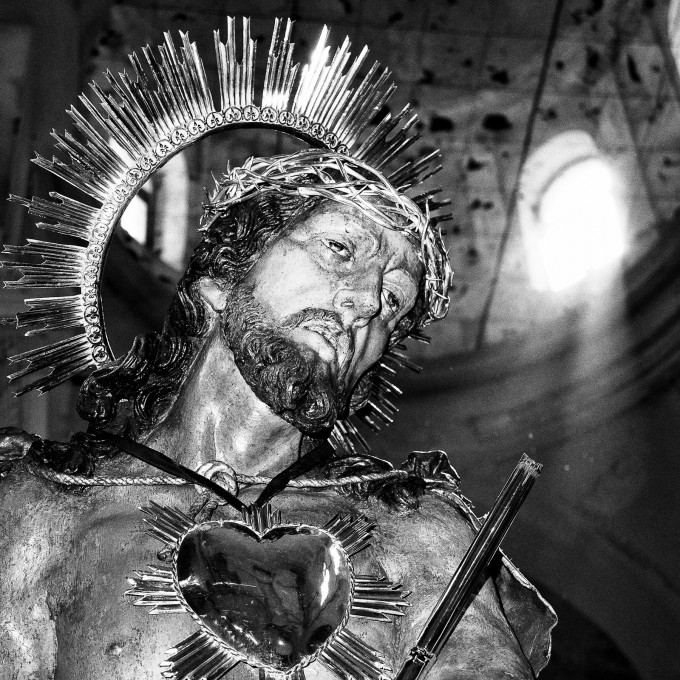
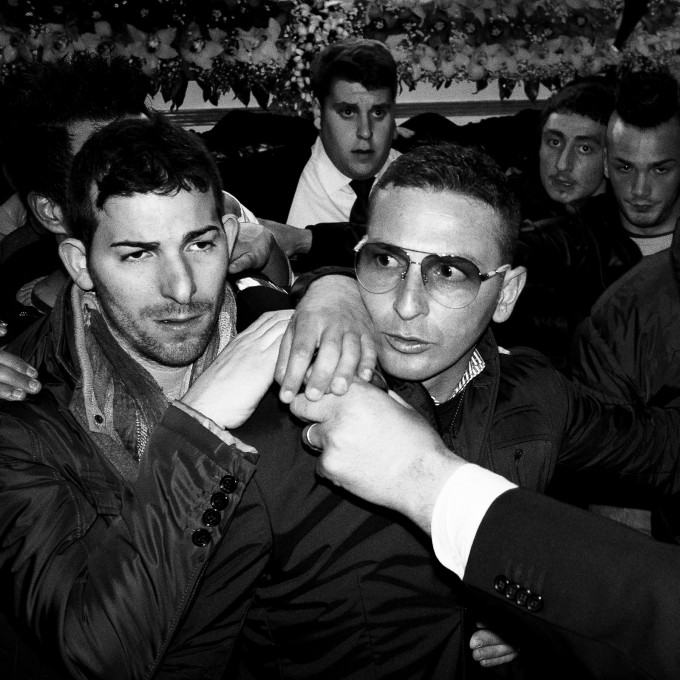
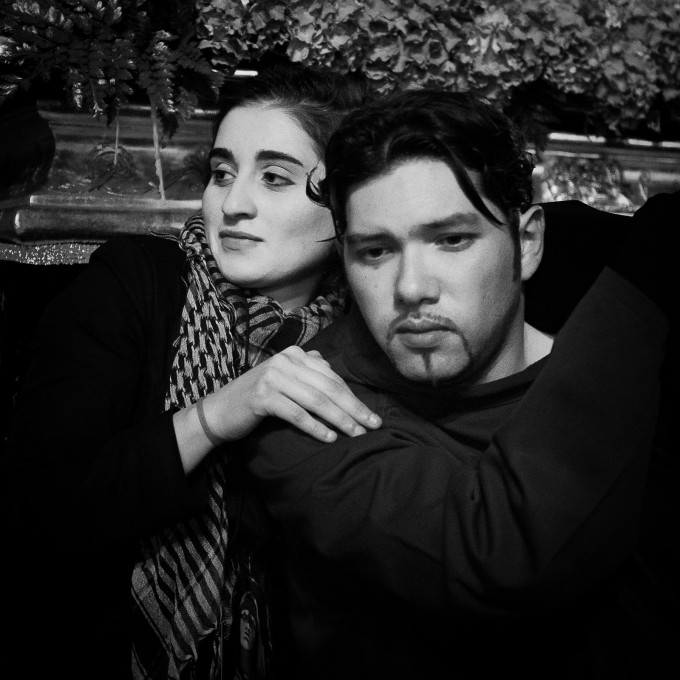
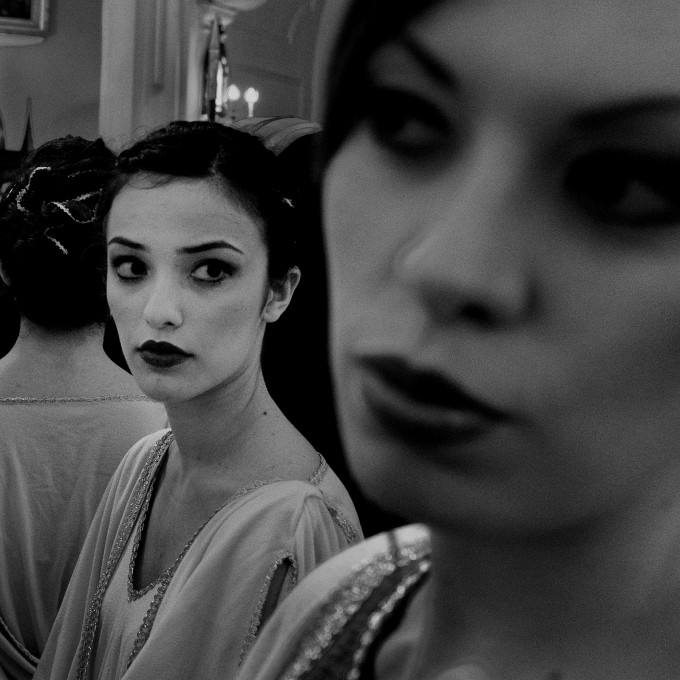
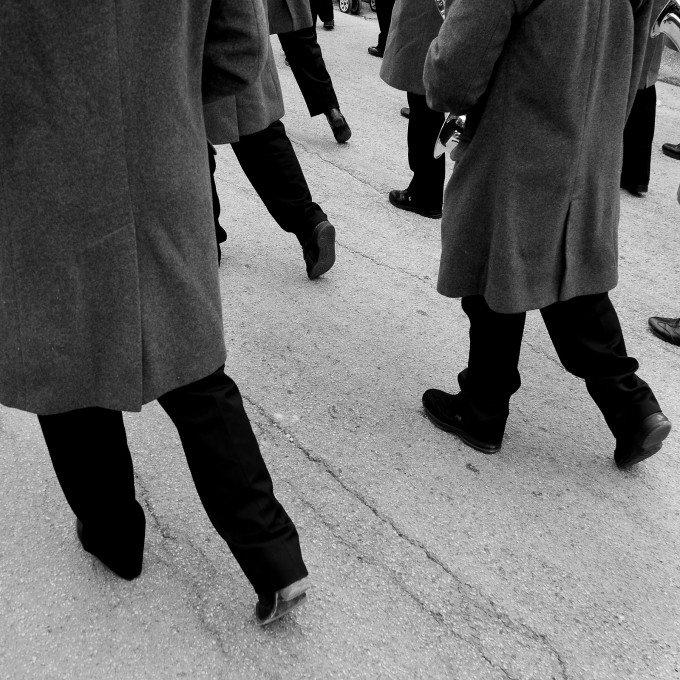
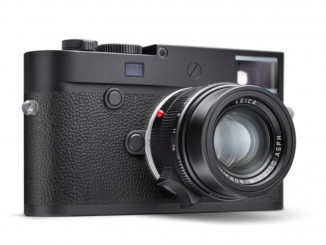

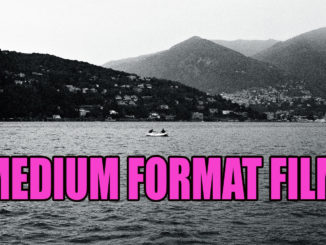
still one of my favourite articles on Steve’s outstanding site
Gorgeous photography, and excellent commentary. I cannot help but reprise your words, “what I won’t do is dwell on the image quality and technical aspects of the cameras as I find that most cameras nowadays can produce acceptable technical quality results […]. What ‘image quality’ means to me is how effectively can I create interesting photographs with these tools?” It is so refreshing to read this. It is all too easy to be caught up in the technology, and forget that what we do is make photographs, whether with a gazillion pixel super camera, or a Holga. As someone who grew up shooting film, I’m often amused by the lengthy discussions of “noise,” the worst of which is insignificant when compared to the grain of TriX or any of the old high-speed colour films. I’ve been looking at either the X100s or the X20, and leaning towards the former. There’s actually something freeing about the single focal length that I find very appealing. I spent many a shooting adventure with nothing but a 24mm or 35mm lens mounted on an old Nikon; exploring the world through a single lens both forces us and enables us to see in a different way. Seeing such beautiful images come out of these two cameras has given me all the rationalization I need to push me towards a purchase, and I have a feeling the X100s will be the winner. Thank you!
Awesome! Just ordered the X100S, tempted to get both but…. maybe down the road, lol
Wow, really impressive photos that capture the moment AND the emotion. Also, great information for an aspiring photographer, and wonderful emotion and inspiration in your words. Thank you for sharing!
Not too long. Very interesting. Thanks a lot for sharing.
New to the site. I had the good fortune to do a workshop in Sicily for Easter a few years ago with Jonathan Maher. Your images are great and really did a phenomenol job of capturing the “mood” of the events. Truly a spectacular set. I could almost hear the brass band dirges playing as I looked at them.
Well done.
Possibly the best collection of story-telling pictures I’ve seen on this or other websites in relation to a camera review. It was a mistake to overlook this article just because I wasn’t interested in the cameras.
Thanks
Simply amazing.
Himthanks for sharing, it has been a long time i havent seens images ofmsuch beauty. They are true, simple, touching & intense. Amazing.
Inspiring in every way, Colin. Brilliant work.
Dear Colin, I’m one of Bazan’s students too. I truly believe he’s one of the greatest photographers of our time, and besides all the prizes and recognition he has received, (World Press Photo, W. Eugene Smith Grant, etc) he is an amazing teacher and master, an outstanding human being. I’m a professional photojournalist and videographer working for the international press (AFP), and having attended to many many photographic workshops around the world, I can absolutely state that my experiences with Ernesto were the most inspiring and enriching. A funny fact: Ernesto does not car a bit about the equipment he or his students use. I have seen him shooting with an old Canon Rebel (the only digital I think he owns), a Hasselblad X-pan, and the only advise he gives about the gear is the focal length: 28mm or 35mm. I can absolutely recommend his workshops to anyone searching for a deep inspiration and pursuit of perfection in photography. And your images absolutely represent the beauty, sensibility and engagement Bazan inculcates in his students. congratulations and thanks for sharing.
Great pictures, nice compositions.
Phenomenal images, and inspirational treatise (again).
Thank you.
Colin, I really enjoyed reading this, and what terrific photos 🙂
this is fantastic. some of the best I’ve ever seen out of any camera!!! Thanks for sharing. I hope to see more from you in the future.
Dear Colin,
I very much enjoyed your post : as others said, it is good to see carefully composed images, pictures which are not meant only to test a camera…
I also agree that I have not seen such good pictures on the net for a very long time.
It is a good reminder of what can be done with a camera, and that the end result counts more than the camera itself. Something which is easily forgotten nowadays.
Your comments were very clever – also quite unusual on the net, if I may say so…
Thank you very much for sharing this experience with the rest of us.
Thomas
Colin………..One of the finest beautiful poetic shots I ever seen these days…. every time you changed my mind about equipment. great post…. great photographer. I say one word txs for sharing.
These are amazing photos. While I’m not a big fan of any type of PP, I must say that almost everyone of your photos has that film-like quality.
Love the composition. Love how you capture certain previous moments. Just incredible.
Well done Colin.
I so nearly went on that workshop, and I just got the x100s too!
I fully agree that workshops are a special experience through which rapid progress can be made.
The pictures are splendid, no doubt about that, but I want to thank you especially for taking the time to explain your approach to photography in the light of your trip to Sicily. You have passed your experience to others, and this is much more helpful than fiddling with sharpness or speed tests. I just bought the X100s and fully agree with you on the possibilities of the manual focus. I also think there in this camera the “little something” that makes you “want” to take pictures – and this is what counts. Jean-Claude
Fabulous pictures, like the article.
These photos are gorgeous. One of the best collections I have ever seen. Bravo.
Nice article and great photos. Im a huge fan of Catholic art and architecture, you’ve done a great job here of publicizing it.
Im really interested by the X20, I know you say you dont like to pixel peep, but how do you find the sensor holds up to the apsc size?
Hey,
Thanks for your question, however to be honest I find it really difficult to answer as I was reasonabley happy with the results I was getting from the much maligned X10 sensor:) I get the sense that if you are photographing architecture and art then the X20 might not be for you. The real value in this camera for me is its out and out flexibility and control (as I tried to describe in the article) not the image quality from the sensor as such. I love it as a photo making tool though as I strongly feel that it doesn’t obstruct or get in the way of straightforward photo taking and creating because of the simplicity of the manual controls and the set up is perfect for me so that I don’t need to touch menus or anything when shooting.
Sorry I can’t be of more help,
Colin
Thanks for the informative answer. I dont necessarily want an X20 to shoot art or architecture but as an every day carry around camera. I dont expect DSLR quality from a compact, but I would expect a camera of this technological advancement at least keep up with my antique Leica X1. I know it will wipe the floor with it for viewfinder and focus speed, but I would be crazy to downgrade in the IQ department.
I am just being very cautious before jumping in.
Hi, I understand completely. I found this more technical review for you http://www.photographyblog.com/reviews/fujifilm_x20_review/ and I can certainly confirm that I love the way this camera handles and behaves and the results that I have been getting from it are very aligned to my style and thinking when I try to envisage what a shot might look like. I also think that the quality of build and materials used is exceptional for the price. I also like the fact that this is second generation on the design and they have kept the great usability of the X10 while improving in the right areas (screen info etc)
Thanks again for looking and taking the time to comment, good luck if you decide to buy one 🙂
Colin
Even tho’ I don’t own these cameras, I’ve learned an awful lot about settings, framing and light effects from your images and thoughts. And I really like what 1:1 gives. Since I also work with a rwo camera solution (hate changing lenses in the open!), I found your reflections very relevant – also on image quality. Thanks.
Not a “ramble” by any means, very much enjoyed the post and find it a welcome change to the tech bitching we are so often subjected to in the comments.
If we can’t tell ourselves which camera took which – does it really matter? Of course not. That’s the lesson here.
Bravo Colin, great pics, great story telling and I love the conversions and format that you have used.
Dear Colin,
These are beautiful photographs-a testament to your visual language which is caring, sincere, authentic, elegant, and very interesting. It was very nice to see you in Sicily-I was quite moved by being there myself this year and will return again next year. Bravo for your wonderful portfolio and look forward to seeing you again some time soon I hope. Peter
Hey Peter,
I really appreciate these comments from you and draw great inspiration from your words. As you are probably aware one of the life changing events that I alluded to in the article was your workshop in Istanbul after which, for the first time, my mind was opened to the possibilities of photography and I then had the courage that I got from you to try to explore further and find my own, individual way to try to see the world. For that I am eternally grateful to you.
It was indeed lovely to see you in Sicily and its just a shame we did not have more time to talk, let’s rectify that next time around. Enjoy Cuba.
Colin
Whaou ! These photos are fantastic, especially n° 3, 4, 13 and 14.
You’re really close to the very best !
I’m curious about which ones are X10 and X100, even if the most important is your eye !
Fabulous pictures, wonderful article – thanks for posting this, Colin!
Superb pictures and a very entertaining text. Thanks for sharing.
Fantastic images. Pictures without time that could have been taken 30 years ago. Love the bw too.
As someone that has spent many workshops with Ernesto I echo your enthusiasm 100%. I feel that excitement every workshop with him and cherish our friendship after so many years. It is hard to explain to others how 2 weeks of intense creativity, friendships & life can change you other than to experience it for themselves. Your images are quite beautiful. I’ve never been to the Sicily worship but I know how hard it is to get the image – my favorite is either the man with the cross or the nun’s eye. Wonderful. Thank you for sharing (and thanks to my brother for sharing your post with me!).
I absolutely love photo #8 of the two girls (I think it’s a double exposure). I think this may be one of my top 5 favourite photos of all time!
Cool pics man!
Beautifully composed set of photographs, and would not have looked that different if taken on B/W film. Give me digital and Silver Efex Pro 2 any day – a fantastic piece of software that I am delighted Google is continuing to support.
As a Sicilian from Trapani I am very familiar with the Easter Week celebrations, which especially in Trapani involve everyone in the city for 24 hours, with people flocking in from other cities as well. The city is transformed during the procession, which is called “I Misteri”. Your pictures are beautiful and artistic, and really capture “details” that are hard to isolate when you consider the large crowds around you. I don’t mean it as a criticism, and I am saying this for those who have never been there, but the pictures here do not show the whole atmosphere, the music, the thousands of people, the candles, and the statues being taken in procession; all of the above are amazing and would inspire many other forms of picture taking. So if you go, there is lots more to see and photograph! Thanks for sharing.
Hey Alberto, you are absolutely right, I don’t think I captured the ‘real essence’ of these festivals and that is simply because it was beyond me at this point in time. I think it would require repeated visits to build a good enough body of work to do the full celebrations justice. As this was my first trip there I was overwhelmed by the whole event and found it very difficult to shoot the musicians and alters being carried around the town so I decided early on to try to isolate subjects in interesting light in a painting type representation and this drove the type of shots I ended up with. A glaring omission from the post was the friendlieness and welcoming feeling that I had from the people of Trapani given that photographers can be intrusive at times and there were quite a large number. Anyway, many thanks for your comments and its my hope that the choices I made are a little bit different from all of those other photographers and that’s the beauty of the whole creative process and personal approach to seeing things.
Thanks again, Colin
Real photography, Colin; sincere thanks for these images. And I appreciated your comments towards the end of the article re. the workshop you attended; it is all about people, in the end. Truly excellent work, for me.
Superb stuff. Very powerful and moving images. Thanks for sharing! The Fuji X100/X100s (and the X20) cameras are made for this sort of shooting, I believe, and I feel they really excel here. And if the shots right after you talk about the X20 are taken on the X20, I prefer the look of these to the X100, somehow. Thanks for sharing your process too – I’m going to have to take out my new X20 and shoot, instead of just doing multiple test shots and crops for my review! Cheers
Enjoyable article but I can’t help but help wonder how much more enjoyable it would have been to you had you shot in film as opposed to a digital filter to give the film look. For me digital and film are far apart there is still no equal in B&W to film. Still a great read.
Colin, your compositions are wonderful.
Although there are many photographers who convert their images to monochrome, I get a the sense that you are one of the few who have really committed enough to reach this form’s full potential.
I recently started shooting with the X20, and fell in love with the design. I liked it more than a X100 I tried briefly. Just as you noted, the Fuji engineers seem to be designing these for photographers – every control is where you need it. It took me a bit longer to come to grips with how to process the images in a way that I could call my own.
Although I realize you have no intention to pixel peep, and no reason for it based on the powerful impact your images have on people, I would like to note that you have included very good examples of the two types of digital “grain” that many have discussed in other forums. Interestingly, your post suggests that the whole topic is a bit of a tempest in a teacup. It is not readily apparent upon first viewing, which is which.
The picture of the man and the cross has the chaotic organic texture that closely matches high-resolution drum scans of Tr-X film. The image of women with head scarves immediately preceeding it has an underlying maze of right angles that characterizes the more digital look that has been attributed by some to artifacts of NR or sharpening algorithms.
If any readers would like to see an in-depth forum thread that includes examples as a reference point for how closely this compares to actual Tri-X film scans, here is a link.
In any case, your work is outstanding. Thank you for sharing your art and your insights!
the question is if we are emphasizing objects, subjects, situations, emotions, life … or if we are emphasizing cliches?
sorry .. but i cannot see anything worthwhile in this photos
greets michael
Sorry, Michael, you seem to be in a tiny minority. Can you explain your criticism? I’m certainly not saying that you are wrong, it’s art and ANY opinion is valid as long as it is backed up with considered reasons.
If it provokes discussion, it’s usually art. Apart from the digital pseudo-grain, I like these images a lot. For me, they have something that keeps me wondering and wanting to look again.
I’m in two minds about these. The images are really, really good, particularly for black and white. Graphic, expressive, compelling.
But I feel the use of a pseudo-filmlike grain overlay is really a mistake; it looks awful, and awfully digital, in many of these images.
I keep thinking, let film look like film, let digital look like digital, also in black and white.
I know now that when Steve has an article with photos by this photographer Colin Steel I need to pay attention and today’s article is no different. Sicily is one of my favorite places. While in the Navy we flew in and out of NAS Sigonella just south of Catania. The people are delightful and the food is some of the best. And then there’s the photo opportunities.
Thank’s Steve for sharing Colin’s latest work as its always a pleasure to see how other photographers see the world!
Superb 🙂
Regards PHILIPPE
SIR Colin,
Love your images, love your eye… I have not yet read the txt, what you had to say as I was simply going from image to image… indeed, camera’s are an afterthought. I think you can do equally well with an iPhone 🙂
Great essay! Using flash can outgun high-ISO cameras and very fa$t lenses any day. One simply cannot cannot control the artificial light sources that creep into dimly-lit images just by high-ISO. Using a flash as shown above allows one to take images in almost any situation. Why don’t people get that?
About the workshops: I slightly disagree with Colin’s first rule in choosing a workshop. It’s better to pick a photographer one really admires (Colin’s rule #2), rather than choosing first by location. Bazan is an excellent workshop leader; I attended his lecture last year and met him afterward. He is as full of humanity as Colin says, and it shows in his photography. A lucky choice for Colin!
I’d like to also add to Colin’s list that there are terrific workshops every year at the Look3 Festival in Charlottesville, North Carolina. The Toronto Contact Festival of Photography also features Magnum-run workshops every 2nd week in May.
Wonderful work. It is interesting that if you have constraints (Black and white, square format, fixed lens) it can free you to create even better work. After 2 years using the X100 I am slightly at a loss when I put a zoom lens on one of my Canon DSLRs.
Great article
Lovely pics
Bravo Colin, what a great reportage !
Each photo tells a story and that’s what people forgot in the latest Daily Inspirations..
Great post-processing too.
Oopst, I meant too “busy” not too “bush”!!
Colin, you’ll have to forgive me for not reading anything on the writeup. I was too bush perusing over the great photos! I’ll go back and read the stuff now. 🙂
Hi Colin!
I was also there in Trapani shooting the religious festival.
I clearly remember that, while in the church, i asked to try the viewfinder of the x10 (maybe the x20?) to a guy that also had the x100 (maybe the x100s?).
He was very nice and let me try it, so we talked about the little x10 and he explained to me that he liked to shoot in b&w with square format.
Was that guy you?
This would be crazy fun! ;-))))
Let me know!!!!
Hey Giorgio, yep, that was me !!! It was really nice to meet you and I hope you enjoyed it as much as me 🙂
That’s amazing. I can not trust this “intercontinental” connection!
I enjoyed a lot the festival, and i also bought a X10 after our inconter.
If you want, you can check my photos of “Misteri 2013” here:
http://www.flickr.com/photos/iamminefoto/sets/72157633140963545/
Let me know if you like it!
You have a great eye, and excellent timing.
i like the pciture of the cross 😀 and i have sell that picture to my friend ;D
Truly awesome photographs. You are an inspiration.
Colin,
This is the best post i have read anywhere in a long time, i am honestly speechless. Let me just say you learned very well. Your photos here to me is absolutely masterful top to bottom – Genius!
I saw Peter Turnley’s work at the opening of the Leica shop in DC last year, Peter’s work is nothing short of fantastic! Hopefully i can get to attend one of his workshops in the near future…
Bravo Colin!
Wonderful! Why do some people spend ages talking about how bad noise is when grain can look this good. A noise free image is always a good starting point and these can be seen here too, however noise does not necessarily spoil an image, it makes some of these. The photograph of the man carrying the cross oozes atmosphere. Properly inspirational work.
“Colin once again proves it is not about the gear at all..but about skill and vision.”
I agree that photography is about those above quoted attributes, but this article clearly states the subject of the article is about two cameras – the Fuji X100S and X20.
I’m confused as this site leans heavily toward “gear” reviews. Why make a statement that “it is not about the gear at all…”
Compelling photography, superb
Fantastic images and review. Hank -you for all the wonderful information.
I briefly tried an X100s on display at Dixons on my way out of the U.K. last Friday. Though I pointed it at other cameras on display (the green rectangle in the middle of the screen was, I assume, the focus point) it would confirm focus and then the background ended up in focus when it would take the shot. I was sure I had it on AF. Did I miss something? Focusing manually with live view and that nifty split screen was fine. Needless to say I left the store happy that I was carrying fast and accurate focusing OM-Ds on my trip and not one of these.
This has to do with the minimum focus distance with the OVF active.
I have the X100s and I have been using it allot on my son only 9 months old, when trying to frame a closeup I always have to turn on the EVF to be able to get close enough otherwise it ends up like you say.
I think if I remeber correctly that in OVF-mode the MFD is about 40-50cm and in EVF-mode 21cm.
By the way the pictures are lovely. Its always something magical with B&W pictures when you get it right.
Excellent work. One reason that the photos are so good is due to the tight composition. Every image seems to be trying to burst out of the frame lines.
I think it does not matter what camera you have in their hands. You have captured the atmosphere especially in Italy. Underscored by the image format and processing. Rarely have I felt so caught up shots like yours. The images show much humanity and empathy with all due respect, you have applied to the occasion accordingly.
Again, I’m a little bit closer, which I also would like to give back. I thank you for your work and the presentation of the religious spirit.
Only I miss something plasticity, but that probably does not even give the Fujis. I would gladly have seen these shots with a full frame camera, because I believe that the mood had been taught even more impressive.
Thanks and best regards, Klaus
Some lovely photographs.
But, i don’t understand how we can include the comment, “it’s not about the gear,” when we’re talking about two current/modern digital cameras, with a workflow that includes some state of the art software. We’re not talking about having done this with a primitive Pentax K1000 film camera. In what way would a 2013 Fuji be a hindrance?
Just one comment about the ‘square’/TLR emulation — it might be more convincing if you avoided close-ups in this style, since most of the work done by those particular photographers would have been done at >1m, given the limited close focusing capabilities of the Rolleiflex and Mamiya TLRs. Of course, there’s always cropping and Rolleinar-type accessories, but those change the look a bit.
Nice choice of Tri-X. I love that aesthetic. I’m envious of your opportunity to take part in the Bazan course.
Respect. That’s some inspirational article. Thanks a lot for sharing.
Love the use of back light.
Whoever has visited Sicily, whoever is fond of that sort of culture, whoever is serious about photography with a real touch of humanity, whoever loves B&W, will love and admire these fotos which really resemble old fashioned paintings. It’s hard to believe that not a Leica MM was the instrument delivering such impressive quality fotos (shots would not be the right word). So, I admire the result of the week and the workshop and the cameras. And I am grateful for the type of education by your words, your results, your important advise on how to make the best out of serious workshops. Colin, this is one of the most stunning articles I have ever seen on Internet and these are fotos of MAGNUM type quality. Thank you so much! Rolf
What an excellent post. I think you’ve convinced me to buy SilverEfex. And to take more photographs.
Daaaamn, that’s some really really nice shots, there! I ljust love the idea/concept (or lack thereoff?) not to dwell to much on the tech-aspects but rather the actual content and perhaps more precisely the NERVE of/in it. I also enjoy this ‘right-in-the-kisser’ approach and the surprisingly great results sometimes achieved. I’st seems very clear by following Your series over time here that the light comes 1st and then the objects come forth by themselves (well,sooner or later hopefully).
Thanks for sharing. Enjoying Your shots everytime!
Best
klehmann
great shots, regardless of camera, congratulations:)
Amazing pictures! You have a great eye for the right moment. And I love the square crop. Makes me jealous that I don’t have it on my own (and by now “old”) X100. But really great work!
WOW !!! … but wish we knew which ones were with the X20 ?!
Great selection of images. I’m a fan of the square format too, and the Tri-X processing gives a classic feel to all the subject matter. Interesting to read your thoughts on the X100s also, as I have the X100.
Cheers.
wow! just wow!
Beautiful pictures and insightful words. Thanks for your share!
All these images are simply stunning ,.. Especially the 6th and last image its blown my mind
Beautiful images …. don’t need to say anything else except thanks for sharing them